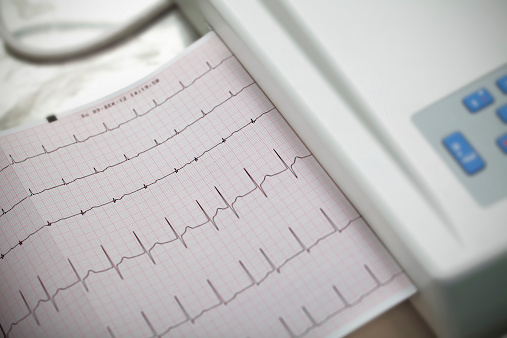- Providing Helpful Healthcare Products Since 1999 | Our Hours: 8 AM - 5 PM CST Mon - Fri
- +1-877-750-0376
Atrial Fibrillation

Back Pain Prevention
December 14, 2017
Keeping Caregiving Grandparents Safe
March 28, 2018Detection and Risks
Atrial Fibrillation (AFib), also known as heart arrhythmia, is a heart disorder defined as ‘an irregular and often rapid heart rate that occurs when the two upper chambers of the heart (atria) experience chaotic electrical signals.[1] Consequently, the overall function of the heart can suffer from this condition.
Almost 3 million Americans suffer from AFib, with 33% experiencing more serious symptoms. In addition, the American Heart Association (AHA) estimates that more than 6 million people actually have this condition but have not yet been diagnosed—the symptoms of AFib are not always discernible and may only be discovered during a routine physical. [2]
Risk factors associated with AFib:
Stroke: Studies have shown that someone with AFib is 5 times more likely to experience a stroke.
Blood Clots: Blood clots can form in the heart that then travel to other organs, leading to ischemia or blocked blood flow.
Congestive Heart Failure: Due to the lack of blood flow to the heart, the build up of fluid in the lungs can ultimately lead to heart failure. This also creates edema in most of the body’s extremities—hands, arms and legs.
If you experience shortness of breath, weakness, heart palpitations, such as fluttering and/or heart pounding, dizziness, loss of balance, chest pain or pressure, inability or reduction in the ability to exercise, you may be suffering from AFib. Although the symptoms may come and go, it would be important to schedule a visit with your physician. AFib is not usually a life threatening condition, but if untreated, it can lead to more serious complications.
Like most medical disorders, there are those people who are at higher risk in sustaining the various illnesses; this increases the likelihood of suffering from a certain condition. Examples of the risk factors associated with Atrial Fibrillation are as follows:
- Age—although younger people can have AFib, it usually affects people between the age 65-85 with the mean age being 69; women who are over 75 years old make up 70% of the AFib population. [3]
- Obesity—a recent study from Women’s Health Study, show that women who are obese have a 41 % higher chance of developing AFib.[4] The damage to the heart can occur because of the build up of pressure of blood vessels in the lungs, stretching the heart muscle, hence triggering this condition. Obesity can put pressure on the neck causing sleep apnea—this causes changes in the structure of the heart. Your chances of suffering from complications from Type 2 Diabetes is also greatly increased. Reducing weight is key to turning this unnecessary risk around; exercising daily, reducing sugar intake, eating healthy foods including a diet low in saturated fats and lowering salt intake are easy steps to take.
- Alcohol—drinking too much or being an alcoholic can cause hypertension and an irregular heartbeat which is associated with AFib.
- Chronic lung disease—asthma, emphysema or COPD sufferers
- Drug use—cocaine and/or other stimulants
- Family History or Congenital birth defect
- History of heart disease
The treatments of Atrial Fibrillation are vast in nature. Once diagnosed, your physician will recommend the most effective way of managing this condition.
[1] Mayoclinic.org
[2] CooperHealth.org/Heart
[3] NIH.org
[4] Journal of the American College of Cardiology (2010)

